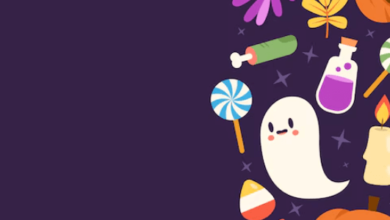Simplify Your Learning Journey with Flashcards

Flashcards have become a cornerstone for effective learning, helping students and professionals simplify their study routines and retain information longer. By focusing on key concepts and engaging in active recall, flashcards reduce the stress associated with overwhelming study materials. This article explores the benefits of flashcards, how to create them, and advanced strategies to enhance your learning experience.
Why Flashcards Work for Stress-Free Learning
Flashcards leverage two fundamental learning strategies: active recall and spaced repetition. Active recall involves testing your memory by retrieving information, which strengthens your ability to remember it. Spaced repetition schedules reviews at intervals designed to enhance long-term retention, reducing the need for last-minute cramming. Together, these methods streamline the learning process, making it less stressful and more productive.
See also: Is It Safe to Download Gmail APK on Huawei Phones?
Benefits of Using Flashcards
Here’s why flashcards are a must-have tool for learners:
- Improved Focus: Flashcards help you concentrate on one topic at a time, minimizing distractions.
- Portable and Convenient: You can study anywhere with either physical or digital flashcards.
- Customizable: Tailor flashcards to suit your specific needs and learning preferences.
- Engaging: The interactive nature of flashcards keeps your brain actively involved in learning.
- Efficient: They allow you to target weak areas and improve understanding faster.
Creating High-Quality Flashcards
To maximize their effectiveness, it’s crucial to design well-structured flashcards. Here’s how:
- Stick to One Concept Per Card: Keep your cards simple and focused to avoid confusion.
- Use Concise Wording: Summarize key points in short, clear sentences.
- Add Visuals: Incorporate diagrams, charts, or images to support visual memory.
- Frame Questions: Pose a question on one side and provide the answer on the other to encourage active recall.
- Organize by Topic: Group flashcards into categories for more structured study sessions.
Transforming Notes into Flashcards
Converting detailed notes into flashcards is a highly effective way to condense information and focus on the essentials. With advancements in technology, you can even use a note to flashcards AI generator to streamline this process. Here’s how to do it manually or with the help of AI tools:
Manual Conversion
- Highlight Key Information: Identify the most important concepts, definitions, and examples from your notes.
- Summarize: Condense the information into question-and-answer format for easy review.
- Add Visuals: Include relevant charts or illustrations to reinforce learning.
- Organize: Divide your flashcards into decks based on subject or topic for targeted study sessions.
Using AI Generators
AI tools like Quizlet or specialized note-to-flashcard apps can automate the conversion process. Simply upload your notes, and the tool will generate flashcards tailored to your content. This saves time and ensures your cards are structured effectively.
Best Practices for Using Flashcards
To get the most out of your flashcards, follow these tips:
Review Regularly
Consistency is key. Set aside time each day to review your flashcards and reinforce your knowledge.
Mix Up the Order
Avoid memorizing the sequence by shuffling your flashcards frequently.
Practice Both Directions
Test yourself from question to answer and vice versa to deepen your understanding.
Focus on Problem Areas
Spend extra time reviewing flashcards that cover concepts you find challenging.
Advanced Flashcard Techniques
Once you’ve mastered the basics, try these advanced strategies to elevate your learning:
The Leitner System
This method organizes flashcards into different levels based on how well you know the material. Cards you struggle with stay in lower levels for frequent review, while those you master move to higher levels and are reviewed less often.
Gamify Your Learning
Set goals, track your progress, and reward yourself for hitting milestones to make studying more engaging.
Mnemonics and Visualization
Use memory aids like acronyms, rhymes, or vivid mental images to make complex topics easier to recall.
Collaborate with Peers
Share your flashcards with classmates or study groups to gain different perspectives and reinforce learning.
Flashcards for Different Subjects
Flashcards can be customized to suit any subject or learning goal:
- Languages: Practice vocabulary, grammar rules, and pronunciation with flashcards.
- Sciences: Simplify complex formulas, processes, and terminologies.
- History: Memorize dates, events, and key figures using chronological or thematic flashcards.
- Math: Use flashcards to practice equations, theorems, and problem-solving steps.
Digital vs. Physical Flashcards
Choosing between digital and physical flashcards depends on your learning style and preferences.
Digital Flashcards
- Easily accessible on devices, allowing for study anytime, anywhere.
- Features like spaced repetition and progress tracking enhance learning efficiency.
- Integration with multimedia elements such as audio and video.
Physical Flashcards
- Offer a tactile learning experience, which some learners find more engaging.
- Simple to customize with personal notes or drawings.
- No need for internet access or electronic devices.
Tracking Progress and Staying Motivated
Monitoring your progress can help you stay motivated and focused. Here’s how:
- Set Milestones: Break your study sessions into achievable goals, such as reviewing 50 flashcards daily.
- Analyze Performance: Use digital tools to track your retention rates and identify weak areas.
- Celebrate Success: Reward yourself for reaching milestones to maintain motivation.
Avoiding Common Flashcard Mistakes
To fully benefit from flashcards, avoid these common pitfalls:
- Overloading Cards: Keep each card concise to prevent overwhelming yourself with too much information.
- Skipping Difficult Topics: Regularly review challenging flashcards instead of avoiding them.
- Inconsistent Practice: Stick to a consistent study schedule for optimal results.
- Relying Solely on Flashcards: Complement flashcards with other study methods, such as practice exams and group discussions.
Integrating Flashcards into Your Routine
Flashcards can easily become a part of your daily routine. Here’s how:
- Review During Commutes: Use digital flashcards on your smartphone while traveling.
- Quick Study Breaks: Take a few minutes to review flashcards during short breaks.
- End-of-Day Review: Go through flashcards before bed to reinforce learning through sleep.
Conclusion
Flashcards are a versatile and stress-free study tool that can help you master any subject. By applying active recall, spaced repetition, and advanced strategies like the Leitner system, you can optimize your learning and achieve your academic or professional goals. Whether converting your notes into flashcards manually or using AI generators, the key is to stay consistent and engaged. Start incorporating flashcards into your study routine today and experience the benefits of stress-free, efficient learning!





